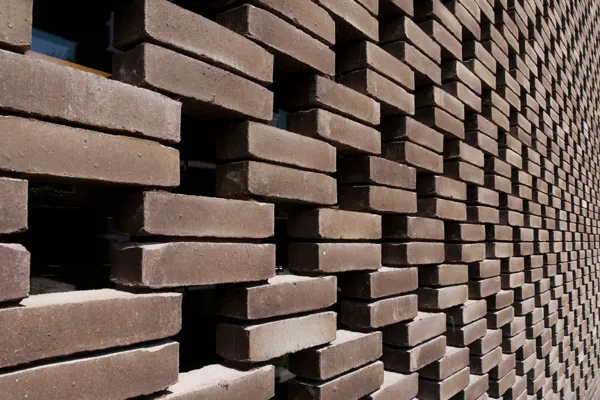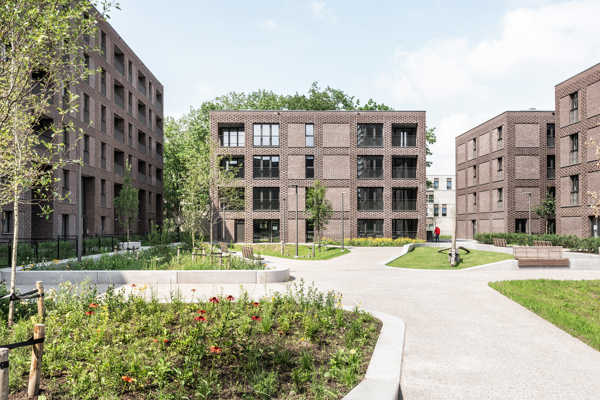Facing brickssEptEm 8025
Technical data sheets
- Color description
- The bricks are through-coloured and the colour is earth brown.
- Manufacturing dimensions (L x W x H)
- ca. 220x72x52 mm (LxWxH)
- Quantity / m² with a traditional joint
- 68
- Number / m² with a thin joint
- 77
sEptEm 8025
Brown ecological moulded brick
This brown sEptEm 8025 with subtle shading carries our ECO-7-size label and it is also part of our Kaliber series. Unlike a classic Waal format which is 10 cm deep, this unsanded facing brick is 7 cm deep, which means that it leaves more room for insulation or living space.
case studie sEptEm 8025

Mariatroon residential care centre in Dendermonde expands significantly
Septem 8025: a brown brick with subtle shading and an ecological trump card
In the centre of Dendermonde, a new replacement building has brought a new dimension and a diversified range of care services to the Mariatroon residential care centre. The new residential care centre now has an increased capacity and provides accommodation for specific types of care such as the treatment of people with Huntington's disease.

LUCA II: brick architecture combining unity and diversity
Social housing project provides answer to varied Luchtbal district
The Luchtbal district of Antwerp recently gained a special construction project. LUCA II accommodates 118 social rental housing apartments spread over eight homogeneous blocks. The most distinctive feature: the brickwork with its repetitive pattern, boldly articulating the façades. The design was produced by B-architecten in collaboration with the Slovenian bureau Bevk Perovic Arhitekti.
Continue reading
References
How to Install ?
Preparation of the construction site
- Always order the full amount of bricks required for a specific site. In this way, the entire order can be made during one production run.
- Try to have the full order supplied at one time. If this creates several deliveries, always mix a number of packs from the previous delivery with a number of packs from the new delivery. This procedure is especially recommended in case of re-order or for an additional order.
- Take bricks diagonally across the pack.
- Draw and use bricks from at least five different packs.
- For setting out, use bricks from the delivery made to the site in question. Do not exclusively use the theoretical dimensions of the brick, or samples previously supplied, or different production run from that intended for the site.
- As soon as the bricks arrive on site, check delivery tickets and certificates against the specification and order. Also check that there are no visible inconsistencies with the order.
- Do not lay bricks in freezing weather or protect the ‘fresh’ masonry with insulating mats in order to avoid frost damage to the mortar.
- In the case of prolonged dry hot weather, lightly dampen the newly laid brickwork to stop the mortar drying and curing too quickly.
- Do not lay bricks in precipitation in order to prevent mortar from running on the wall.
Avoid Efflorescence
- During and after laying, protect the newly built brickwork for a height of at least 60 cm - but ensure there is airspace between the brick face and the waterproof covering.
- Provisionally install rainwater down pipes to avoid saturation of the newly laid brickwork
- Never lay bricks in driving rain conditions



















